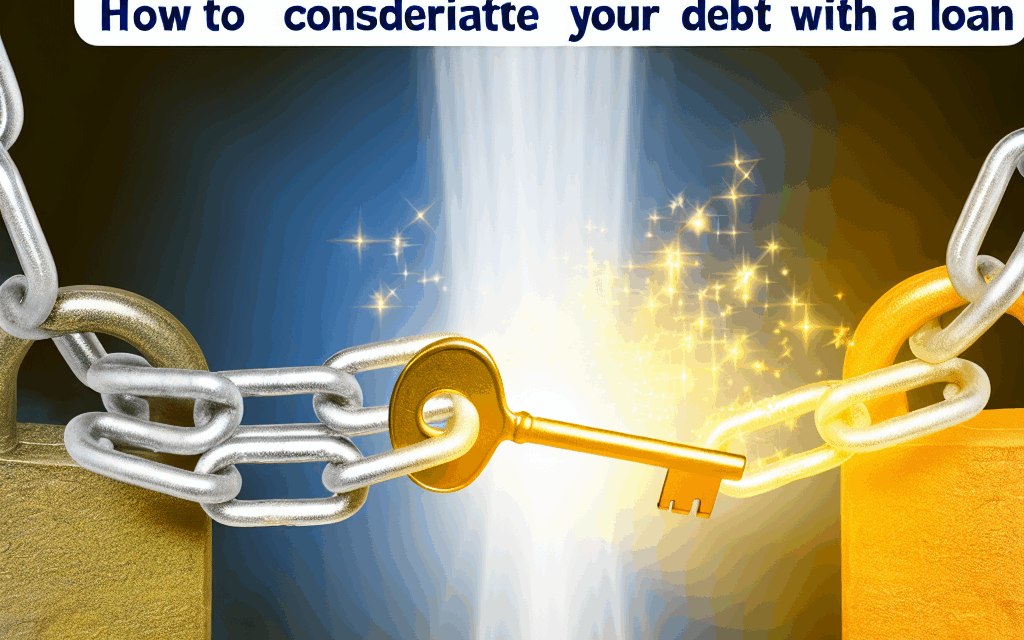Unlocking Financial Freedom: How to Consolidate Your Debt with a Loan
In today’s consumer-driven society, debt is an issue that many people grapple with. From credit cards and student loans to mortgages and auto loans, the burden of debt can significantly hamper one’s financial freedom. One effective strategy to manage this burgeoning problem is debt consolidation through a loan. This approach not only simplifies the repayment process but can also lead to financial savings and stress reduction. Let’s delve into how you can unlock financial freedom by consolidating your debt with a loan.
Understanding Debt Consolidation
Debt consolidation involves combining multiple debts into a single, larger piece of debt, usually with more favorable payoff terms—a lower interest rate, lower monthly payments, or both. This can be achieved through a debt consolidation loan, which allows you to pay off your current debts and focus on paying back just one loan.
Benefits of Debt Consolidation Loans
1. Simplified Finances: Managing multiple payment dates and amounts can be confusing and time-consuming. Consolidating debts means you only need to remember one monthly payment.
2. Reduced Interest Rates: Often, consolidation loans have lower interest rates than the overall rate on your existing debts, particularly credit card debts, which can have astronomically high rates.
3. Improved Credit Score: By consolidating your debt and making regular, timely payments, you can gradually improve your credit score as you reduce your credit utilization ratio and establish a consistent payment history.
4. Fixed Repayment Schedule: Unlike credit cards, a debt consolidation loan has a clear end date. This means you can see the light at the end of the tunnel, helping you plan better for the future.
How to Consolidate Your Debt with a Loan
Step 1: Assess Your Debts
Begin by listing out all your current debts, noting down the owed amounts, interest rates, and monthly payments. This will give you a clear picture of what you’re dealing with and what kind of loan terms would actually be beneficial.
Step 2: Check Your Credit Score
Your credit score will largely determine the interest rate you’re eligible for. Higher scores mean lower rates. Knowing your credit score beforehand helps you negotiate better terms or decide if it’s the right time to consolidate.
Step 3: Explore Your Options
Research various lenders, including banks, online lenders, and credit unions, that offer debt consolidation loans. Compare the terms, rates, fees, and eligibility requirements.
Step 4: Apply for a Consolidation Loan
Once you select a lender, apply for a debt consolidation loan. Be prepared to provide documentation like identification, proof of income, a list of debts, and possibly a credit report.
Step 5: Pay Off Your Debts
If your application is approved, the lender typically pays your debts directly, or you might receive the loan amount to pay them off yourself. Ensure all debts are fully paid and focus on repaying your new consolidation loan.
Step 6: Stick to a Budget
Consolidating your debt is not a cure-all. Maintain your financial health by adhering to a budget, avoiding unnecessary debt in the future, and saving an emergency fund.
Choosing the Right Loan
When selecting the right loan for debt consolidation, consider the interest rate, repayment term, and any additional fees. Sometimes, the loan with the lowest monthly payment isn’t the best choice if it means a longer repayment period with higher interest accrued.
Conclusion
Debt consolidation can be a stepping stone toward financial freedom if used wisely. It can lower your monthly payments, reduce your interest burden, and help you get out of debt faster. However, it requires discipline, and the willingness to make lifestyle changes to avoid falling back into debt. Unlocking your financial freedom is not just about consolidating your debt but also about managing your finances responsibly moving forward.





